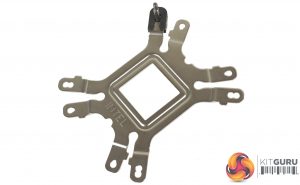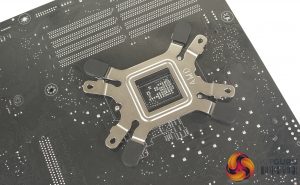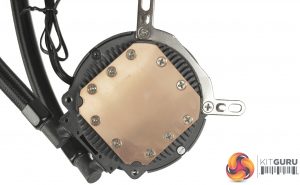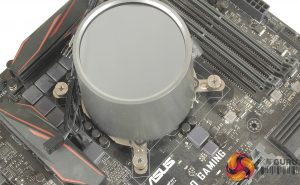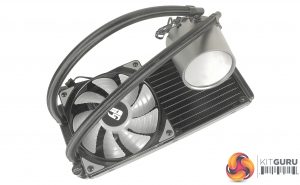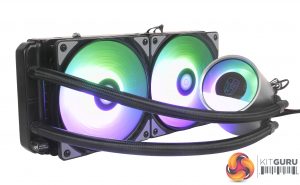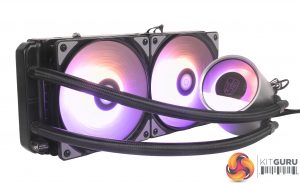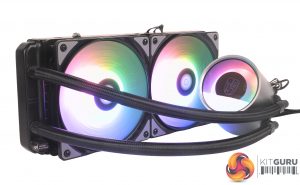Installation is pretty simple and helped hugely by the large image-heavy instructions which break the process down into easy stages. The first stage requires setting up the cooler's backplate based on your motherboard's socket. As we now test using a Z170 motherboard socket LGA1151, the installation process below reflects this.
You use the longer included screws, which are set in place based on your socket, and then held to the backplate using four plastic clips. These are essential to prevent the metal of the backplate contacting the back of your motherboard. The backplate can then be fitted with the screws passing through the motherboard. It is worth noting that there are no additional standoffs to hold the backplate in place.
Setting up the CPU block requires screwing your sockets mounting brackets to the base of the block. It is definitely worth looking over the manual to ensure for best performance, as there is recommended orientation for the CPU block depending on whether you’re installing in an ATX or E-ATX system. Thermal paste can then be applied and the block is held in place using four thumbscrews.
For mounting the radiator and fans, Deepcool has included both long fan screws and shorter case screws depending on your mounting preferences. Once physically installed in your case, you can plug in the fans, using the included fan splitter hub, and choose the correct adapter for connecting the RGB LEDs.
As mentioned I used SATA powered RGB controller adapter, as our testing board doesn’t feature an RGB header. Installation does require a little more work than some coolers I have used before from brands like Corsair, but with the instructions in hand, the process only took around 10 minutes.
With the cooler's LEDs powered up, you get a much better idea of why the addressable RGB LEDs are something to shout about.
The modes accessible through the controller are relatively standard spiralling and breathing modes, but a really unique touch is the spiralling colour effect which matches complementary colours.
Standard pulsing on and off, and static colour modes are also available through the controller, but one of the better-looking options is the rainbow spiral effect which transitions through colours incredibly smoothly.
Using the included motherboard header adapters would offer much more flexibility through programming if there is a particular pattern or set of colours that you prefer as well.
 KitGuru KitGuru.net – Tech News | Hardware News | Hardware Reviews | IOS | Mobile | Gaming | Graphics Cards
KitGuru KitGuru.net – Tech News | Hardware News | Hardware Reviews | IOS | Mobile | Gaming | Graphics Cards
